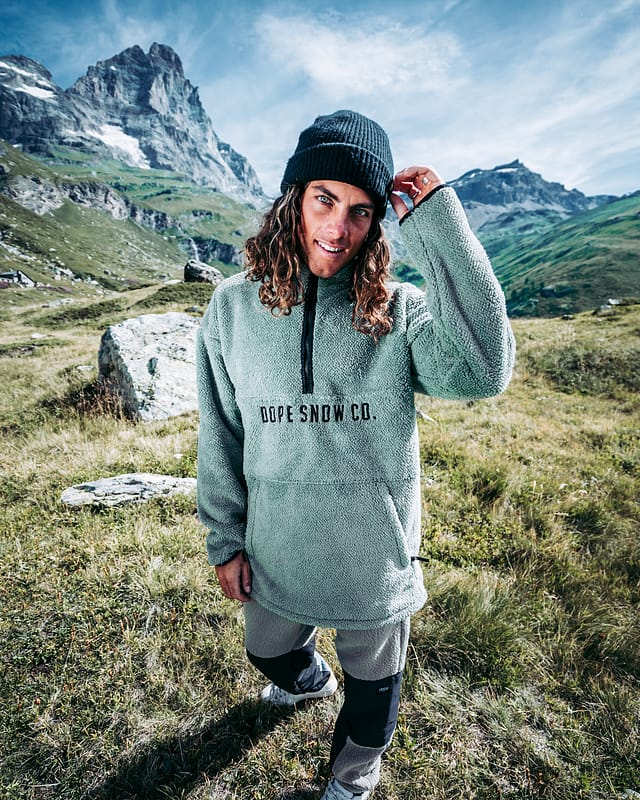10 mountain camping tips you need to know
It's natural for outdoor enthusiasts to start thinking about backpacking and mountain camping to explore the great outdoors. Mountain camping provides one of the best ways to experience the best peaks up close.

Are you thinking of long summer nights out in nature surrounded by your favourite people? We don't blame you! Perhaps you have toyed with the idea of camping and particularly mountain camping. Either way, we think this article from the Ridestore Team will help convince you.
Enjoy the serenity, panoramic views and fresh air that comes with mountains. That said, mountain camping for beginners can be tricky. That's why we are providing these 10 mountain camping tips you need to know. Make your first time as enjoyable and stress-free as possible and read on.
Related Reading:
- Outdoor Clothing Ideas
- Outdoor Jackets | Walking Trousers
- Ultralight Hiking – The Ultimate Guide
- What Is Mountaineering
1. Make a checklist

Camping for beginners can be a challenge, especially if you are not sure about the type of equipment you will need. The worst thing that can happen when out camping is realising that you forgot something. To ensure you have all the essential gear with you, we highly recommend creating a checklist.
2. Do your research and find a great place to spend the night
Camping is meant to be fun and relaxing. However, things can take a fast wrong turn if you are not well prepared for where you are going. Take the time to research and read up on where you are going, the weather, conditions and available facilities.
Also, whether you are camping on the comparatively gentle slopes of the Appalachians or the highest peaks of the Rockies, the one rule of thumb is to always pitch your tent on the leeward side of the mountain. Here, there is considerably less wind, and the weather tends to be a little milder, leaving you less vulnerable to the whim of Mother Nature.
Take the time to scout the area to evaluate an ideal camping site. First, make sure the path is not a place where an avalanche can occur like below an area covered in heavy snow. Also, do not set camp directly under trees as the heavy weight of snow can make them snap.
3. Think carefully about wild camping

Wild camping can be daunting, especially for first-timers. Even so, it gives you a chance to spend the night outside of an official or authorised campsite. You will get to spend the night in undiscovered areas where you will be rewarded with tranquillity, stunning scenery and a sense of independence in the great outdoors.
Just note that wild camping comes with a host of restrictions, responsibility, and a whole new packing list. Make sure you are well aware of the restrictions put in place and allowed areas where you can take on some wild camping. Above all, remember to leave no trace!
4. Watch the weather
Mountain climbing can be especially tricky when it comes to predicting the weather conditions. Although your backyard can be 70 degrees, most mountains tend to have snow packs year round, and night temperatures can drop far below freezing.
The forecast in the valley can be drastically different than the forecast an hour away in the mountains. To be sure, we recommend calling the national park or state office to ask about the weather. They will be in a better position to tell you if the snowpack is partially or mostly melted.
5. Bring snacks and load up on water

The secret to staying healthy in high altitude areas, especially if you love to hike on your camping trips is to drink a lot of water to stay hydrated and ensure your electrolytes remain balanced throughout. In this case, water and food that is high in potassium such as bananas are highly recommended. These two will help ward off headaches and the muscle cramps that plaque most mountain campers.
Also, have a plan of what you are going to eat and how you are going to cook while out camping. This will save you a lot of time and hassle.
6. Invest in high-quality gear
Make sure to invest in high-quality equipment when mountain camping to keep yourself safe and warm throughout your expedition.
• Proper shoes to avoid blisters: Get yourself a sturdy pair of insulated boots with wool socks. If you are climbing ice, consider boots with shanks.
• Tent: Camping tents come in different shapes and sizes, so choose one that is right for you. When choosing a tent, we highly recommend that you pick one that is a size or more significant than the number of people expected to use it. This will provide enough storage room for your gear and still leave enough space to sleep.
• Sleeping bags: Regardless of when you choose to go out on a mountain climbing expedition, it is a great idea to bring along a sleeping bag, mainly because the temperatures tend to plummet at night. When buying a sleeping bag, pay close attention to the weather conditions and temperature rating. This will ensure that you stay at the optimum temperature for that time of year when you will be mountain camping.
7. Be prepared for temperature changes

Weather conditions can be quite unpredictable when mountain camping. Days might be bright and balmy, whereas nighttime temperatures can plunge below freezing. The wind can also be punishing, especially if you camp above the tree line where shelter is hard to find. Therefore, in addition to a sleeping bag and tent, it is imperative that you layer up well to keep you warm and protected throughout the night.
8. Adjust your backpack, you are going to thank us later
Although it’s easy to just grab your backpack and head out the door, paying attention to how you wear your backpack can help prevent back and shoulder pain.
Wearing your backpack wrong exerts more pressure on your neck, shoulders, and back. So make sure to adjust your shoulder straps so that the backpack is high on your back and the straps are comfortable on your shoulders. A properly fitted backpack will keep you moving comfortably, even with a heavy load.
9. Bring a headlamp

When you are trail running at dusk, pitching your tent at night, or trying to find something in your backpack, you can’t beat the convenience that comes with hands-free lighting offered by a headlamp. You can have the best backpack, hiking boots, but without a headlamp, you might as well stay at home. When you are camping out, a headlamp becomes one of the most essential parts of your kit.
10. And most importantly, be safe out there
A mountain camping trip can be a rewarding experience, but it does not come without risk. Therefore, preparation is key when camping. A first aid kit is a great start. Make sure it contains plasters, heat blanket, sunscreen, lotion, bug spray. Sunlight in mountainous areas tends to be more intense and the air dryer, making these areas notorious for causing dry skin and sunburn, even during winter.
Regardless of the time of the year that you plan to go mountain camping, bring along some sunscreen, and use it regularly and liberally on sensitive areas, especially your neck and face.
Even if you are the most experienced camper ever, don’t hike alone. It is always advisable to bring a buddy or two along. Mountain camping brings new dangers that aren’t usually an issue when doing standard camping. In case you fall and get injured, you don’t want to risk freezing out there alone.
Of all the mountain camping tips, knowing where you are and being able to let others know where you are is paramount. Other than a GPS, make sure to bring along a map, and take some time to learn how to read it beforehand.
Wrapping up

That’s it for the moment, guys, we hope you find this article useful! If you are heading on an adventure, send us a pic, tag us online and let us know how you got on tag @dopesnow or @ridestore using #Dopesnow #Ridestore.
Related readings
